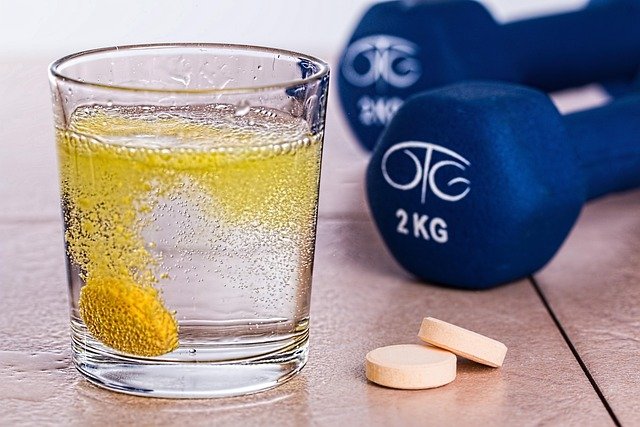Nutrient timing for skin repair and muscle recovery
Small shifts in when you eat can influence skin repair and muscle recovery. Distributing protein, collagen-supporting nutrients, fluids, and carbohydrates around activity and sleep helps support recovery, hydration, and overall wellness without rigid schedules.

Understanding the timing of nutrition can help the body repair skin and rebuild muscle more efficiently. Rather than promising dramatic overnight changes, thoughtful meal timing focuses on supplying protein and amino acids, supporting collagen synthesis, managing inflammation, and maintaining hydration so that resistance training and sleep-based repair processes have the building blocks they need. Practical strategies fit daily routines and emphasize consistent intake across the day to support long-term wellness and measurable recovery.
This article is for informational purposes only and should not be considered medical advice. Please consult a qualified healthcare professional for personalized guidance and treatment.
How does protein and amino acids support repair?
Protein provides essential amino acids needed for muscle protein synthesis and for producing structural proteins in skin. Spreading intake across meals—rather than concentrating most protein in one sitting—helps maintain a steady supply of leucine and other key amino acids that signal muscle repair after resistance work. For skin health, sufficient dietary protein supports keratin and extracellular matrix turnover; amino acids are precursors for collagen-related processes. Meeting daily protein targets and ensuring variety in protein sources contributes to both muscle recovery and skin repair over time.
When should you eat for resistance and strength gains?
Timing carbohydrates and protein around resistance sessions supports strength and recovery. A balanced meal two to three hours before training supplies energy and helps you perform heavier sets; a post-workout snack or meal within 30–120 minutes can help replenish glycogen and deliver amino acids for muscle repair. For many individuals, 20–40 grams of high-quality protein after a workout is effective. Those focused on strength gains should prioritize total daily protein distribution and ensure pre- and post-session fueling matches training intensity.
What role does collagen and hydration play in skin health?
Collagen-rich foods or supplements supply amino acid patterns that may support connective tissue when combined with vitamin C and adequate overall protein intake. Collagen itself is one part of skin structure; supporting collagen synthesis requires sufficient glycine and proline along with cofactors. Hydration affects skin turgor, barrier function, and nutrient transport—drinking fluids throughout the day aids recovery by supporting circulation and waste removal. Pairing collagen-containing meals with vitamin C–rich fruits and maintaining steady hydration before and after stressors like exercise can support skin repair.
How do sleep and inflammation affect recovery timing?
Sleep is a major window for tissue repair: hormonal signals and cellular processes that rebuild muscle and support skin health are most active during deep sleep. Nutrient timing that promotes good sleep—avoiding large, late meals that may disturb rest—can indirectly improve recovery. Meanwhile, acute inflammation after exercise is a necessary component of adaptation, but chronic inflammation can hinder muscle growth and skin repair. Incorporating anti-inflammatory foods (omega-3s, polyphenol-rich produce) across meals, while still providing post-workout protein, helps manage inflammation without blunting beneficial training responses.
How can you build a practical meal plan for wellness and recovery?
A pragmatic meal plan distributes protein, carbohydrates, and fluids across the day to match activity and sleep. Aim for protein at breakfast, lunch, dinner, and a post-exercise snack to keep amino acid availability steady. Include collagen-supporting foods with vitamin C in at least one meal and prioritize hydrating beverages between meals. Pre-workout carbohydrates improve resistance performance; post-workout combinations of carbs and protein support recovery. Adjust portion sizes and timing to fit your routine—small, consistent improvements often yield better adherence than strict schedules.
Putting timing into context with individual needs
Nutrient timing is one tool among many: age, training volume, medical conditions, and lifestyle determine how closely you should follow specific timing rules. Competitive athletes or people training multiple times a day may need more targeted post-session nutrition and structured meal plans, while recreational exercisers benefit most from meeting daily protein and calorie needs and maintaining good sleep and hydration. Monitor recovery, skin condition, and performance metrics, and consult a registered dietitian or clinician for individualized adjustments when necessary.
In summary, thoughtful distribution of protein and amino acids, attention to collagen-supporting nutrients, consistent hydration, and sensible carbohydrate timing around resistance work and sleep create an environment that supports both muscle recovery and skin repair. Emphasizing regular, balanced meals that fit your daily life promotes sustainable wellness, strength, and improved recovery outcomes over time.





